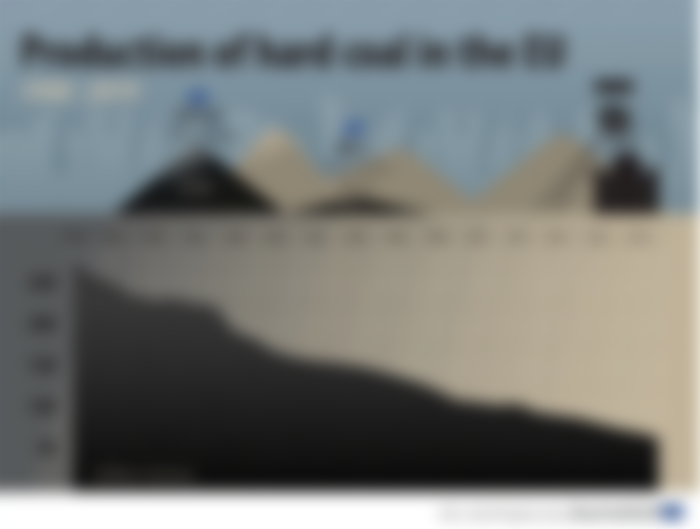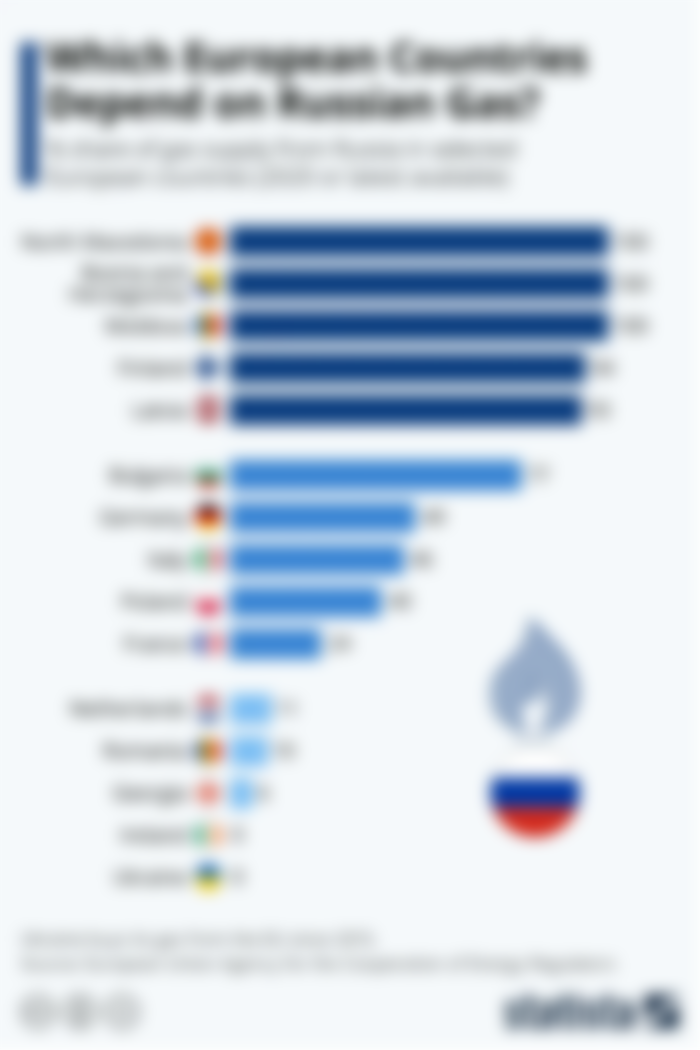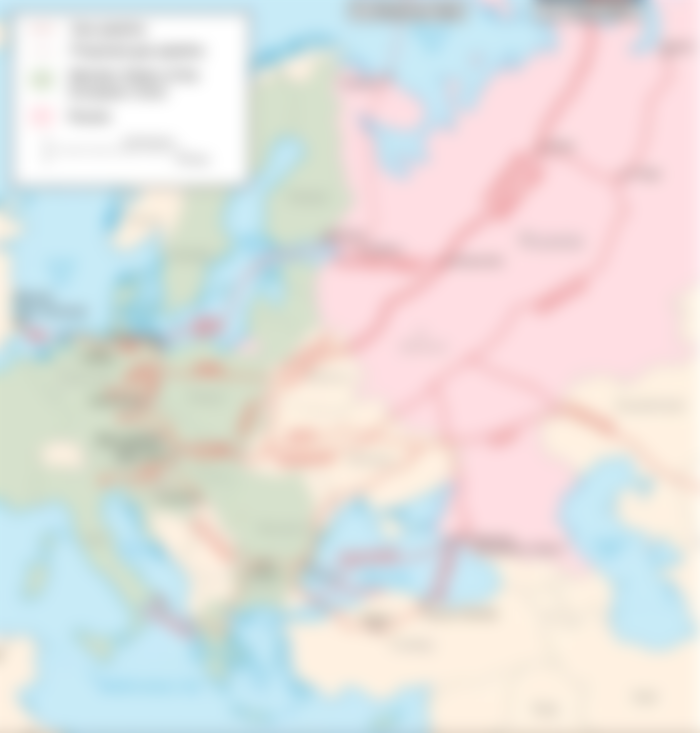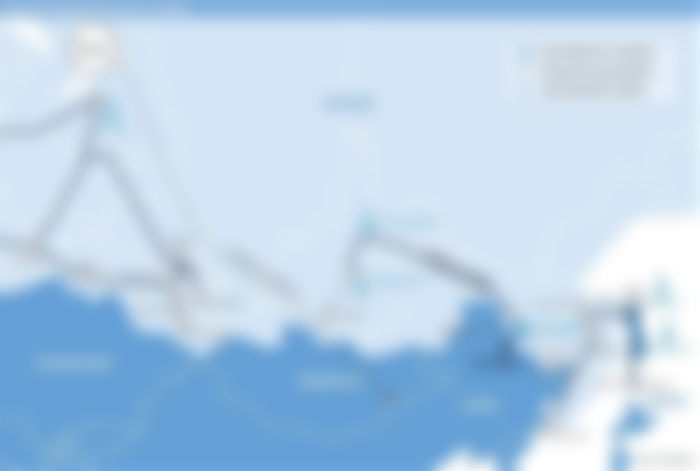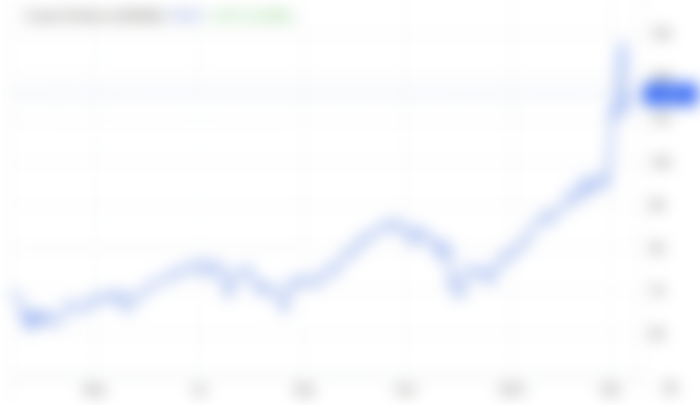How did Europe become so dependent on Russian gas?

Natural gas is the lifeblood of Europe's economy. It's a fuel that heat its homes, powers its factories, and is set to enable its energy transition But the continent has little gas of its own. Instead, it depends on a small group of suppliers, of which Russia is the largest. The complicated relationship it shares with its neighbor has put this dependence in focus. And the conflict in Ukraine is fueling fears that Russia could cut off Europe's supply. And with European sanctions on Russia having excluded energy resources up until now, we can ask how did Europe become so dependent on one country?
To understand this dependency, we have to go back to the 1950s. Back then, most of your burn coal which was readily available. But it had one major drawback. It was incredibly dirty.

photo from eurostat
Gas which was becoming cheaper, cleaner and easier to transport, quickly became essential for Western Europe's postwar economic recovery.
With continental Europe didn't have huge quantities of gas, so it had to look in unorthodox places. If we take a look at a map of the main pipelines, we can see that Europe got its gas from two main areas. We see pipelines coming from Siberia, with which the cash strapped Soviet Union provided increasing amounts of gas to European countries. Further to the west are the gas fields of the North Sea, and according to which were discovered in the seventies and led to supply and demand increasing dramatically.

% of energy resources in Europe as published by BP.
Since the 1990s, its use has surged and now makes up a quarter of all the energy consumed in the European Union. But while a large portion of the gas came from the UK, the Netherlands and Norway, shrinking reserves have meant Europe has relied more and more on imports, particularly from Russia gas.
"We are heavily dependent on imports. 90% of gas is being imported. So we are very much dependent on the suppliers -Ursula von der Leyen"
Gas from the basis of an interdependent relationship. Russia earned a large chunk of its state revenue selling fossil fuels and Europe perceived cheap energy in exchange together with other oil imports. In 2021. This accounted for 36% of government budgets and the EU's imports of petroleum and mineral resources are roughly equivalent to Russia's military expenditure.

russian gas dependency by countries from statistia
But Europe has become dependent on cheap gas, and this dependence is even greater in the east of the continent. Where some countries get nearly 100% of their natural gas from Russia.
With Russian oil firms being either state owned or owned by oligarchs with close ties to the Russian state. This energy partnership translates into a significant influence in Europe.
Russian friendly politicians are rewarded with top jobs at oil and gas firms like former French Prime Minister François Fillon and former Chancellor Gerhard Schroeder, who approved Russian pipelines and is now set to work for Gazprom. The former Austiran foreign minister who now works for Lukoil invited Vladimir Putin as the guest of honor at her wedding.
But that's not the only way Russian gas is used to exert pressure, and it poses a problem. But before we look into it, let's talk about the two things that govern the relationship.

The first are transit fees, which gas companies have to pay as they cross different countries. The second are the long term contracts that dictate the amount of gas that Russian companies need to deliver. These are usually topped off by short term contracts that help adjust for increases in demand, particularly in the winter.
The problem is that Russia is using natural gas to exert pressure on its neighbours. And while Russia hasn't broken any contracts pricing disputes and worsening relations with former Soviet republics have seen it cut off gas to Ukraine, Georgia, and Latvia in the middle of winter.
This was initially limited since transit countries would just take the gas meant for their neighbors. But the construction of additional pipelines like Nordstream one and the now canceled extension, Nordstream 2 have circumvented Central and Eastern Europe, allowing Russia to avoid transit fees, which amounted to billions in revenue for Ukraine and Poland. It would also make it easier to single off individual countries and cut off their gas supply.
Russia has also limited spot sales to Europe, sticking to its annual contracts and leading prices to skyrocket. This has contributed to decreasing European gas reserves to a near all time low. And while Russian politicians have threatened to cut off the block entirely. Europe's dependency is limiting its ability to react in the case of the Ukrainian conflict.
For much of the past decade, the European Union has talked about one thing diversification. Since 2010, the EU has been attempting to increase the resilience of its gas supply. This has been building additional storage capacity and building liquid natural gas terminals to allow for imports from across the world, particularly from the United States, which is pressuring its allies to buy its own gas out of both security concerns and economic self-interest.

Since the adoption of hydraulic fracking in the 2000s, the US has once again become a major gas and oil producer and has looked to expand its markets. This was exemplified by former US President Donald Trump pushing other countries to buy US natural gas and the sanctions put a Nordstrom to to prevent it from undercutting the US price wise.
Europe is also seeing the creation of new pipelines through Turkey, which would allow Europe to buy natural gas from Azerbaijan without transiting through Russia. But efforts to find new suppliers or even renew contracts with existing ones have faced challenges. Diversification had to contend with shrinking domestic production in the North Sea and Russian gas being the cheapest.
As a result, Russia's market share for gas in Europe has increased from 30% in 2010 to over 40% in 2020. The problem, it seems, is that there aren't alternative producers that can supply the volumes. Europe needs as cheaply as Russia. While the EU's gas demand is predicted to decline, so too is its domestic production, which means that imports will have to grow to meet the supply gap.
While Europe has sought to diversify its suppliers, Russia has sought to diversify its consumers, particularly since its falling out with the West over Ukraine in 2014. It's building infrastructure and its far east to sell more natural gas to Asia and in particular China, where prices are much higher than in Europe.

Coupled with investments in fossil fuels, failing to keep up with demand over the past decade and for the foreseeable future. There's less gas on the global markets. And finally, as part of the energy transition, several European countries are choosing to bet heavily on natural gas to replace coal plants and complement renewable energy sources like wind and solar. And the result will only be a problematic and growing dependency on imports, and in particular imports from Russia.
With invasion of Ukraine, it's a dependency that the EU can ill afford. And with natural gas prices reaching record highs and the threat of gas being turned off, it has implications both on European consumers, industry and security. Unlike other countries and regions which have energy resources at their disposal, Europe's energy dependency comes at a steep price, and it's when other countries will continue to benefit from.

While some have proposed opening up Europe's largest gas field again, or the building of strategic gas reserves, others have called for an extension to Europe's nuclear reactors or an accelerated switch to renewables. But as it happens, energy deliveries from Russia continue.

